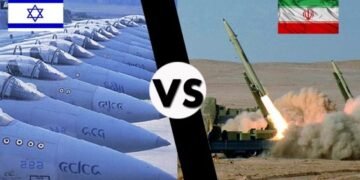KYIV, Ukraine — The United States has suspended certain arms deliveries to Ukraine, citing concerns over depleted stockpiles, just as Kyiv faces mounting pressure from an aggressive Russian offensive and intensifies efforts to scale up domestic weapons production with European help.
The move, confirmed by U.S. officials on Tuesday, comes amid a critical moment in the ongoing war. With Russia pushing forward in multiple regions and stepping up air assaults on Ukrainian cities, President Volodymyr Zelenskyy’s government is racing to bolster its defenses — both on the battlefield and at the production line.
“We are preparing for serious discussions with our European partners on weapons manufacturing,” Zelenskyy said in a Tuesday address, adding that upcoming meetings with EU nations and allies would focus on joint investments and defense projects.
Ukraine’s Shift Toward Joint Defense Production
Ukraine’s Defense Minister Rustem Umerov announced that new legislation enabling joint arms production with international allies will be submitted to parliament later this month. The draft includes proposals to modernize Ukraine’s defense sector and establish a supportive legal and tax framework to attract investment in domestic and overseas arms production.
Germany, one of Kyiv’s staunchest backers, signaled its support this week. Accompanied by defense industry representatives, German Foreign Minister Johann Wadephul visited Kyiv and pledged Berlin’s commitment to speeding up arms manufacturing efforts inside Ukraine.
Washington Pulls Back — and Kyiv Pushes Back
Despite expressing continued political support, the Trump administration has opted to pause some weapons deliveries promised under the Biden administration. Though specific systems were not disclosed, defense experts warn the delay could affect Ukraine’s ability to defend itself — especially against Russian airstrikes.
Ukraine’s Foreign Ministry quickly summoned U.S. chargé d’affaires John Hinkel on Wednesday, calling the halt “very painful” and emphasizing the urgent need to maintain allocated aid, particularly for air defense.
Deputy Foreign Minister Maryana Betsa stressed the “critical importance” of those shipments, while Fedir Venislavskyi, a member of the Ukrainian parliament’s national security committee, called the move a serious blow amid intensifying Russian aggression.
Trump’s Silent Shift and Europe’s Growing Role
Since retaking office, President Trump has not announced new military aid for Ukraine, marking a sharp departure from Washington’s role as Kyiv’s leading military supplier since the war began in February 2022.
In a striking development, European nations have now surpassed the U.S. in total military aid. According to Germany’s Kiel Institute, Europe provided €72 billion (roughly $85 billion) between March and April 2025, compared to $77 billion from the U.S. — the first time such a shift has occurred since mid-2022.
Yet analysts caution that while Europe can help supply artillery and equipment, it lacks alternatives to critical U.S. systems such as the Patriot air defense platform and HIMARS missile systems.
Kremlin Sees Opportunity
Moscow welcomed the news of Washington’s pause. Kremlin spokesman Dmitry Peskov claimed the move could “bring a settlement closer,” suggesting fewer arms deliveries might hasten an end to the conflict. Russian President Vladimir Putin, meanwhile, remains defiant, recently declaring that “the whole of Ukraine is ours” and hinting at a possible offensive toward the northeastern city of Sumy.
A Tense Moment for Ukraine’s War Effort
The shift in U.S. policy highlights the growing divide between Ukraine’s Western partners and adds urgency to Kyiv’s pivot toward domestic weapons production. As diplomacy stalls and Russian assaults intensify, Zelenskyy’s government is betting on long-term collaboration with European defense industries to bridge the gap.
For now, Ukraine’s short-term battlefield capabilities remain uncertain — and so does the international resolve to keep its defense lifeline intact.










































